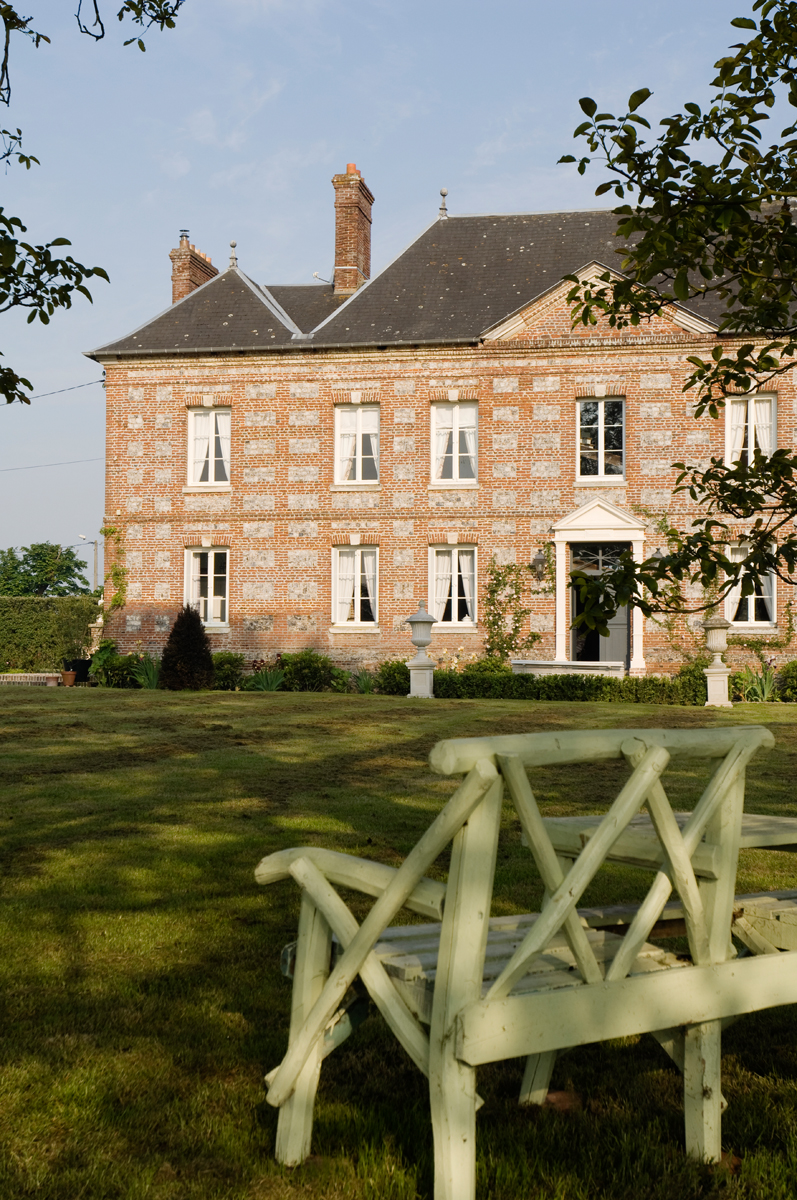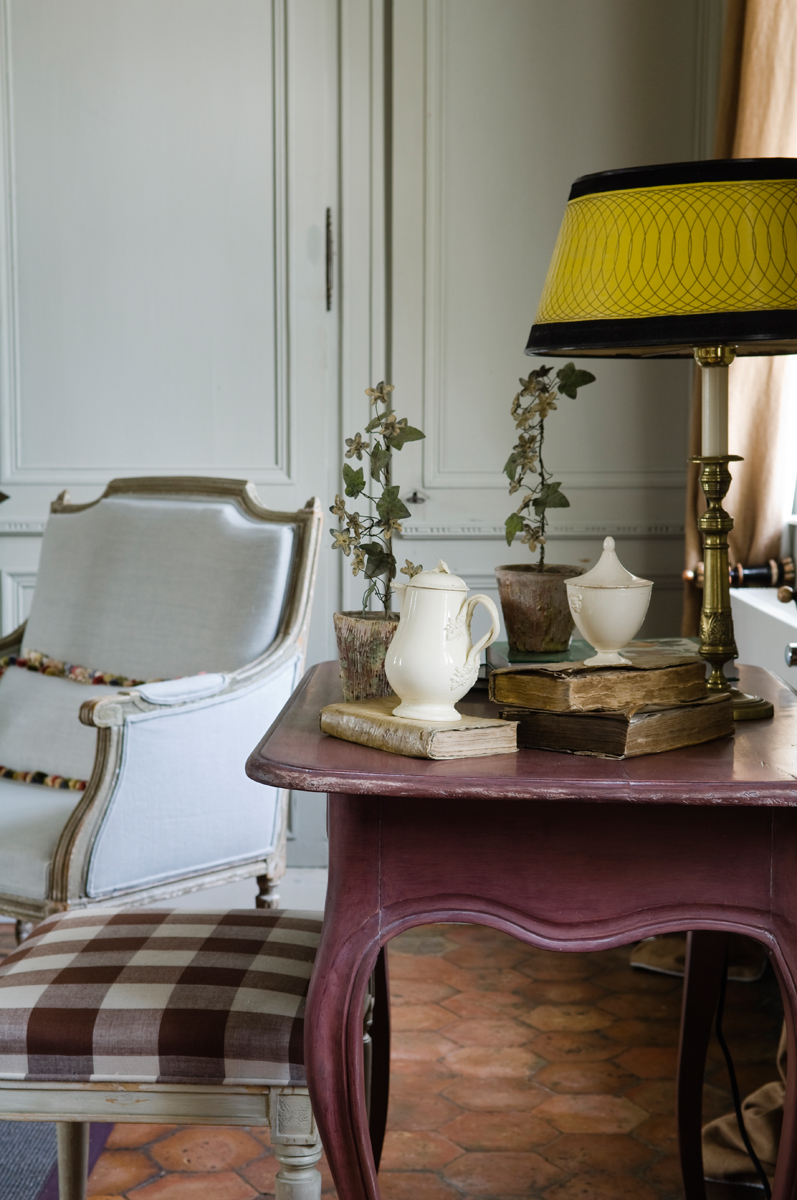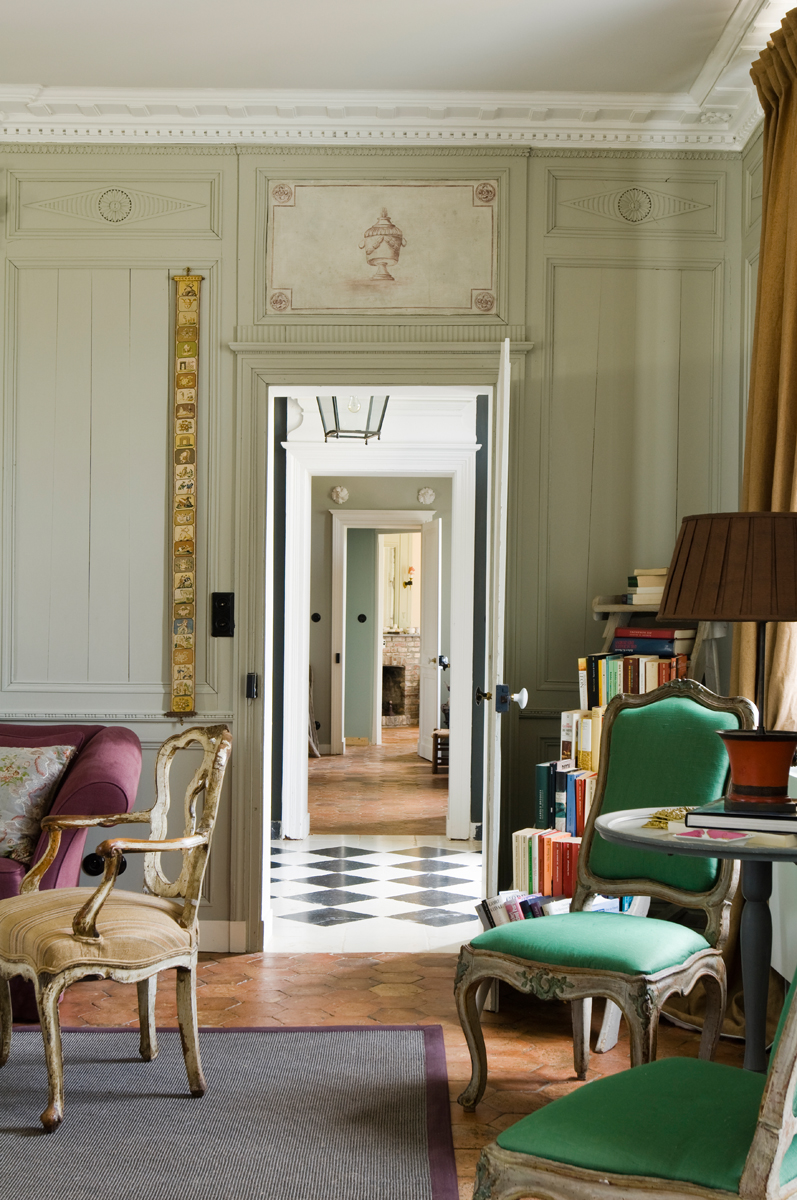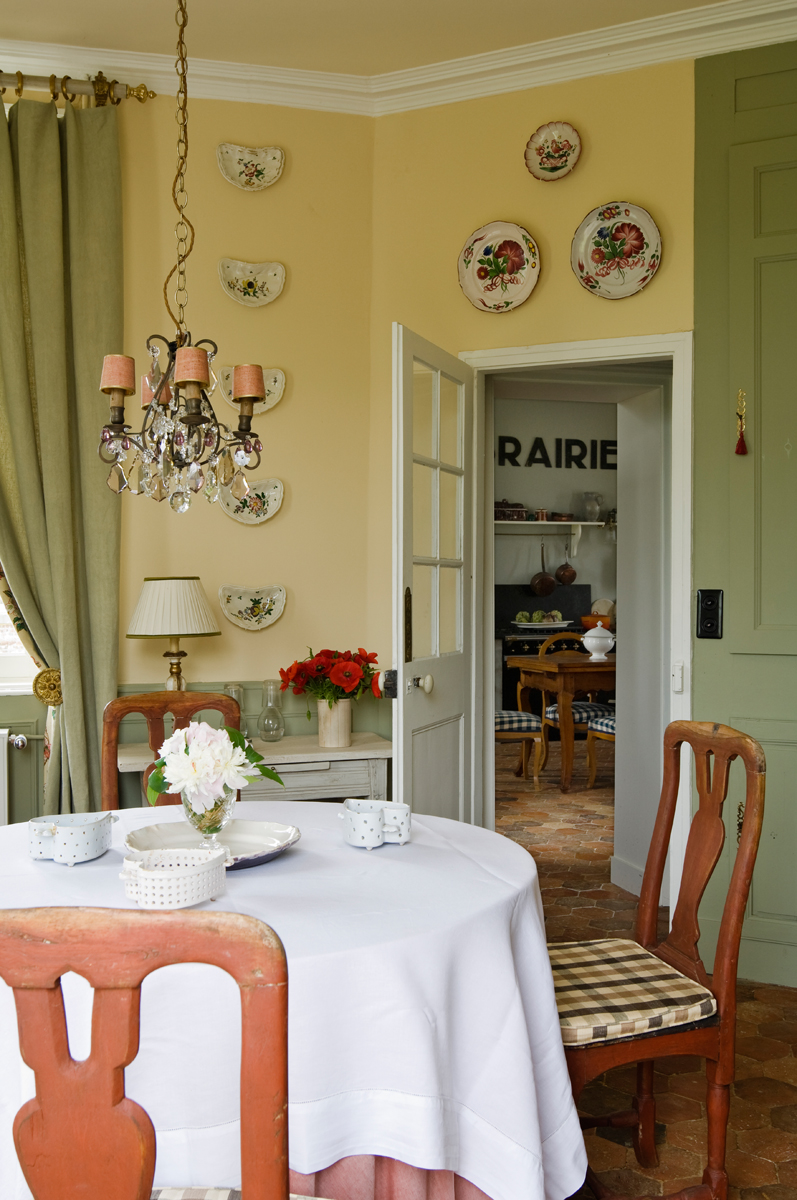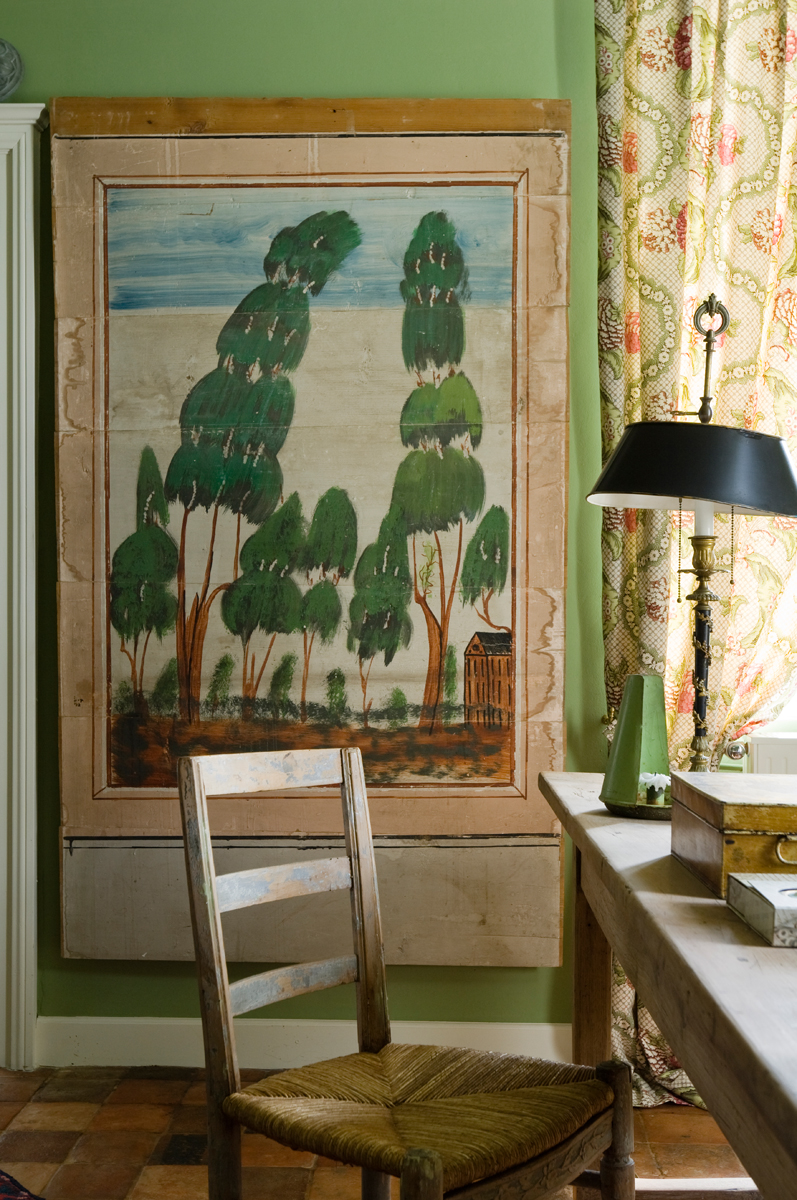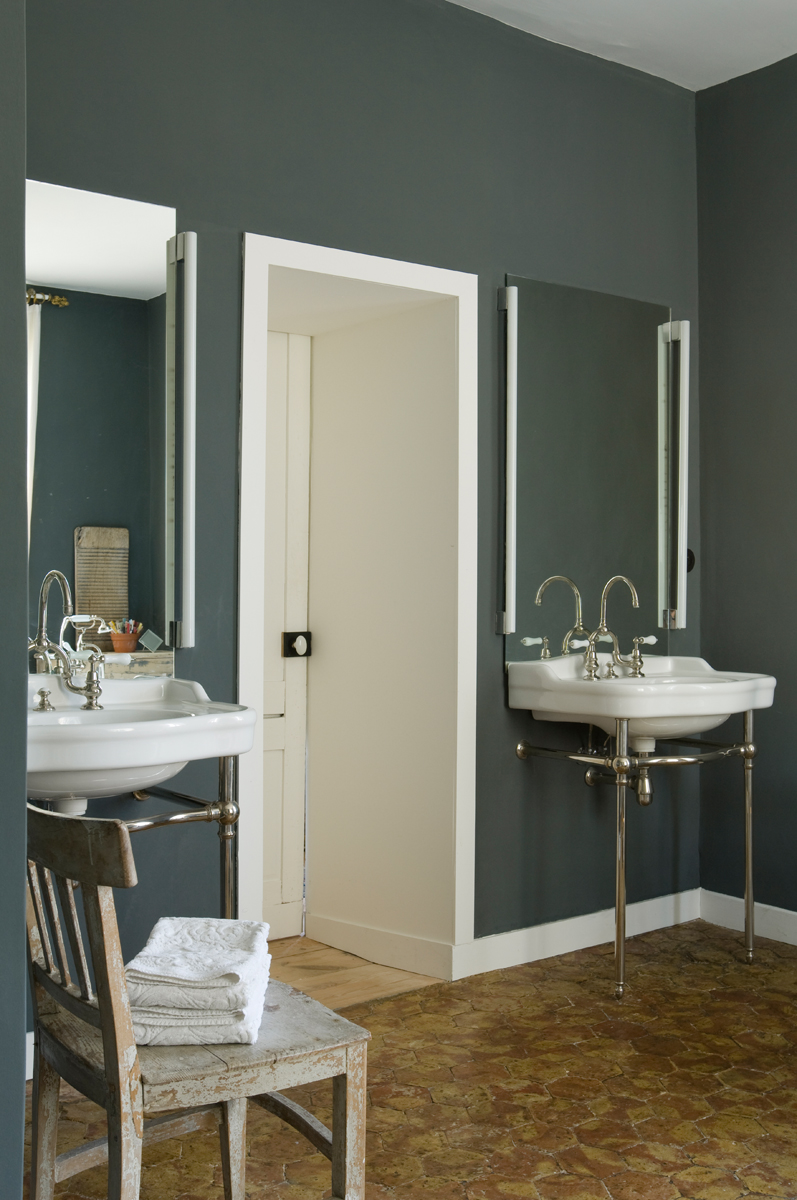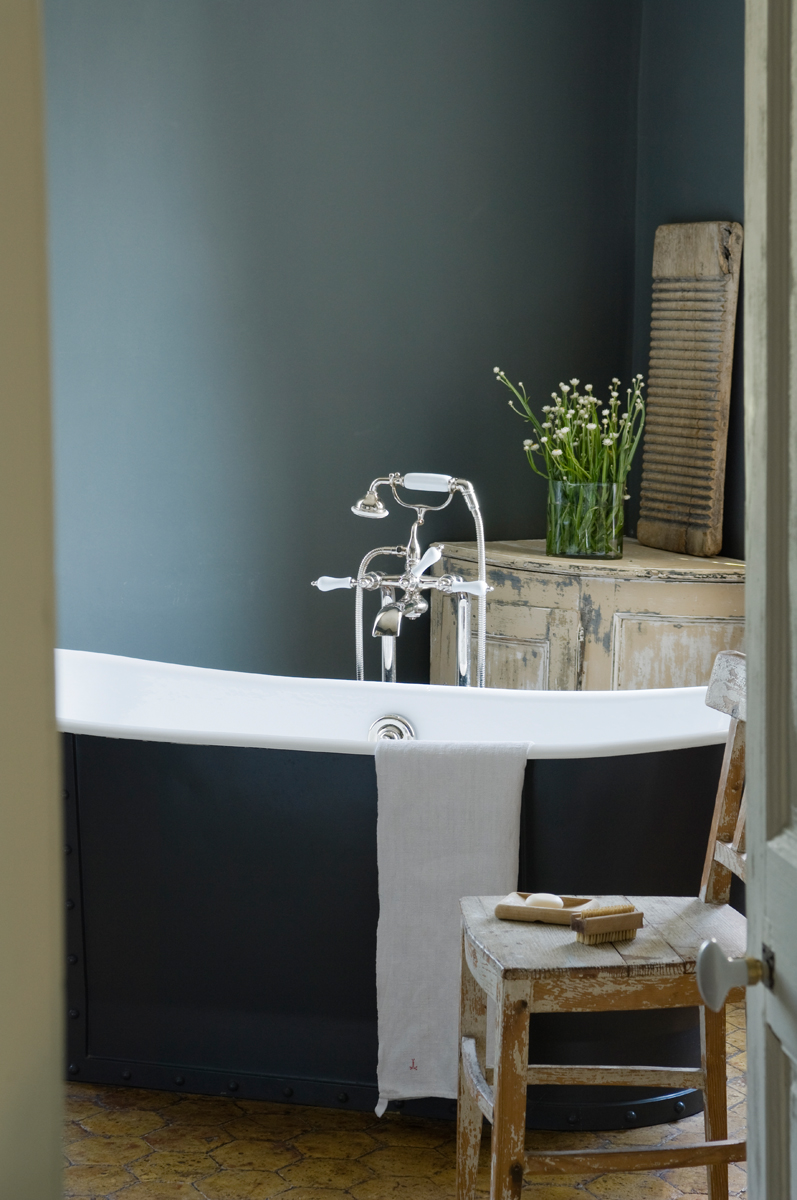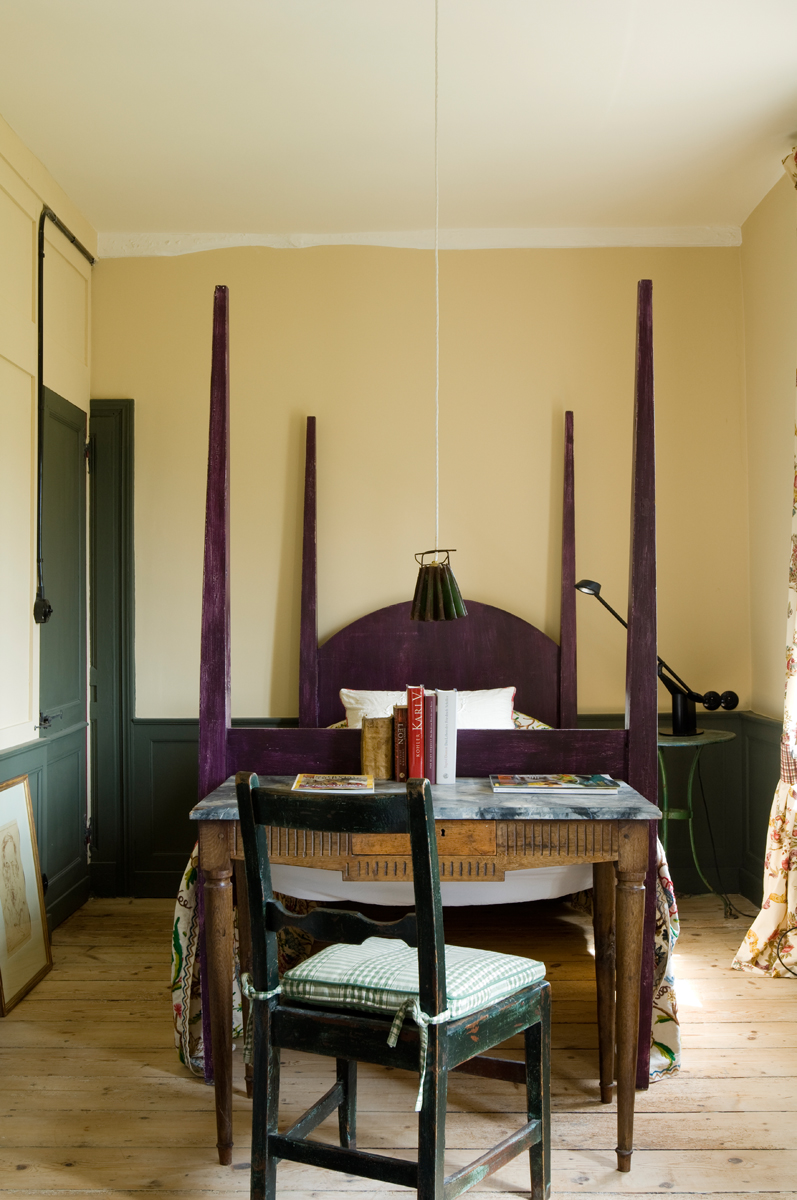When an antiques dealer and decorator bought this early-nineteenth-century house in Normandy,
it was semi-derelict and surrounded by weeds and ‚a century of junk‘.
Having restored and furnished the house, he now has time to indulge his passion for gardening.
Alle Projekte
The builder who created this Normandy house, at the nineteenth century, clearly wanted to impress his rural neighbours, and he must also have been a man with both funds and an eye for classical proportions. Interior designer and serial house restorer, Peter Nolden - whose roster of projects rangers from English cottages and timber-framed farmhouses to a Portuguese colonial house in Brazil - has now breathed new life into it.
Rising above a three-row ashlar foundation course, the main house is constructed of brick with flint insets, with sober front and rear pediments. It was set away from other farm buildings; a stone barn at the roadside, now the bottom of the front garden, is the only survivor of these, along with a coach house that was probably built at the same time as the house.
By 1917, all the farmland had been sold and the land attached to the house was reduced to several hectares of park-like garden. When Peter bought it, sheds, weeds and 'a century of junk' surrounded the building. The saving grace was that the vast, brick and flint garden wall was in good shape, and provided wind protection - a critical factor, as the house is six miles from the coast. Given Peter's ambitious gardening plans, rebuilding it would have blown the budget.
Though the house was semi-derelict, it had an undeniable elegance and more than a hint of Englishness, and Peter was in no doubt that he could create his loveliest holiday home yet. 'I know it's a cliché,' he says, 'but it was a real sleeping beauty.'
Unable to stay in the house, Peter travelled back and forth from Hamburg - 'it's only five hours door to door' - staying in a local bed and breakfast while he planned the necessary work. 'When you are working on your own project, there is a certain luxury time,' he notes. It took six months to plan, draw up the budgets and find the right contractor and project manager. 'I had refurbished a house not far away so I knew my way round, but this was a much larger job.' Clearing the grounds alone took months.
The work required sensitivity, and stripped out each room was a pains-taking job. Enough original panelling and architectural detailing survived to be restored and copied where missing, but all the plumbing, heating and wiring had to be replaced. A number of windows had been blocked up, fanlights were missing and some of the floors were beyond repair. The layout of rooms on the ground floor was good, with a central staircase hall, a salon and study on the right, and the kitchen, breakfast room and utility space on the left; Peter blocked up a doorway to the kitchen that had been added by previous owners, knocking through another to create an enfilade from one end of the house to the other. He fitted the kitchen simply, with two old cupboards, adding oak worktops and a Belfast sink in between.
Remarkably, the sinuous oak and iron staircase was intact. 'I discovered that it had been moved from the right wing to the centre of the house in 1836 - a good move in my mind,' says Peter. The empty space became a hayloft. 'The ground floor is now a sort of orangery, and the area above it houses a spare bedroom,' he explains.
Peter was well equipped to take on the project. His interior-design and decoration business centres on his shop in Hamburg. Filled with eighteenth- and nineteenth-century antiques, unusual fabrics and his own range of paint colours, it is the embodiment of his favourite style. An early fan of the use of old linen sheets for upholstery, mixed with fragments of old silk, and madder-and indigo-dyed toils, he makes the late-eighteenth-century look appear fresh. 'I love painted furniture for the shop and baroque shapes, but teamed with coir or wool rugs and plain, well-made curtains for a quieter style.'
Having a base in France is ideal for forays to Rouen and beyond to buy mirrors, chandeliers and furniture for the shop. Peter also buys in Sweden, Switzerland and England. 'Some people have been saying that restoring period details and furnishing with antiques is over, but I find quite the opposite to be true,' he says. 'Germany has favoured modernism for decades but people are now becoming much more aware of, and sympathetic to, historic architecture; I spend a lot of time advising clients how to get it right.'
Upstairs, the accommodation is spacious and colourful. On one side of the landing are two bedrooms with sitting rooms; on the other, Peter has created a private sitting room for himself, painted an intense coral colour called 'Very Nice Red', which, like all the paint colours in the house, is from his own range. Beyond this are the main bedroom and bathroom, plus a small spare room accessed from the sitting room. It's a real mix of things up here,' he says. 'The Shaker-style bed, now painted purple, came with me from Brazil.' The dominant colours in this part of the house are red and green, tempered with white upholstery. Pattern is limited to a Thirties, English rug found in Tunbridge Wells, lampshades in a Brunschwig & Fils fabric, and old toile pelmets used to create a half tester above the bed.
Four years after beginning work, Peter felt the interiors were complete, but the garden is an evolving project. Hundreds of trees have been planted, often by visiting friends; borders have been created, and an arbour is ready to go up. 'English-style gardening has become a passion of mine, and it suits this house - mind you, I spend a lot of time cutting grass,' he says.
This part of northern France has a lot to offer - enormous skies, sweeping landscapes and vast beaches affording long walks, as well as visits to other houses and gardens. Peter sometimes lets the house between June and September: 'It's a good time to be in Hamburg - and to take a break from gardening.'

